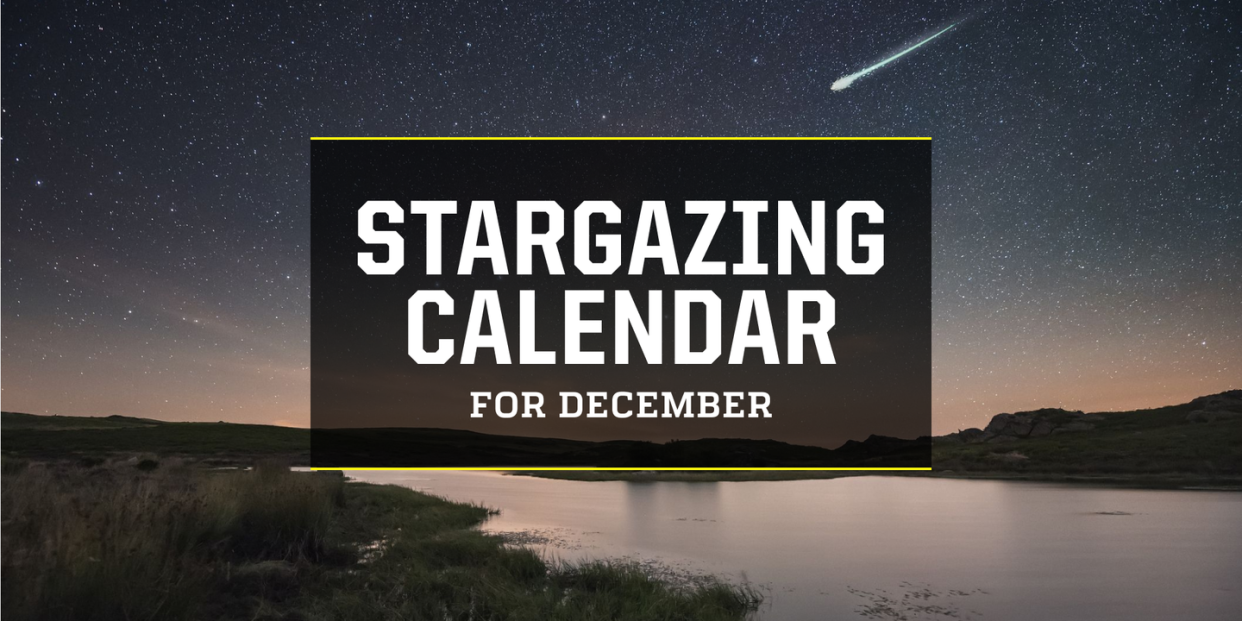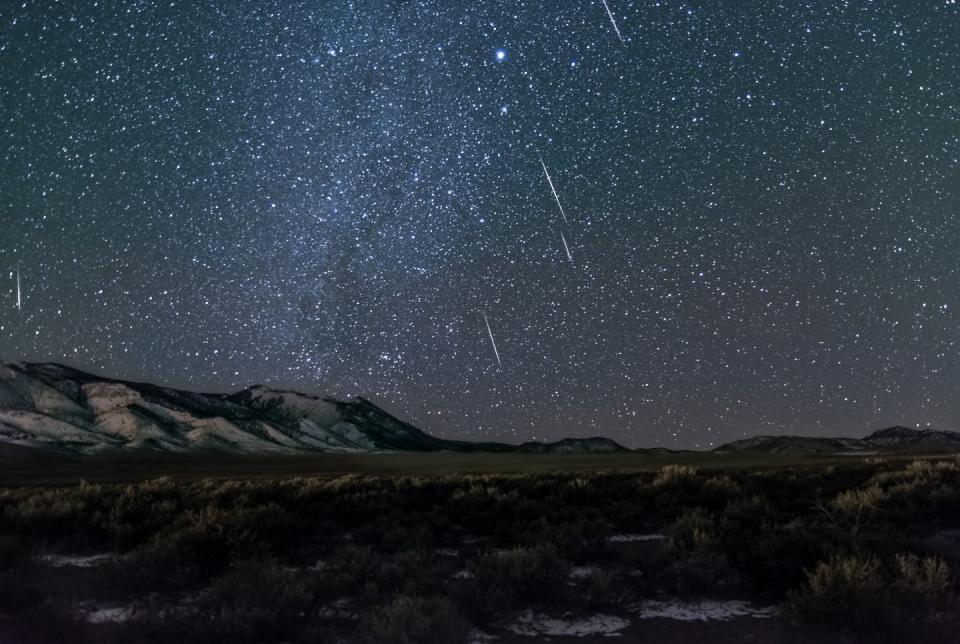Your Stargazing Calendar for December 2022

The Geminid meteor shower mid-month is one of the most active of the entire year.
Early-month lunar occultations of Uranus and Mars will give December skies extra appeal.
December is the best time for planet watchers to get a good view of Mercury.
Stargazers have plenty to keep them busy on December nights. As one of the more active months near the end of the year, December features events from lunar occultations to multiple meteor showers. And with a darkening sky each night leading toward the shortest day of the year on December 21, there’s plenty of time between sunset and sunrise to take in these spectacular sights.
🌠 You know the cosmos is amazing. So do we. Let’s look to the skies together—join Pop Mech Pro.
💫 Meteor Showers
One of the most active meteor showers of the year is a highlight this month. Peaking between December 13–14, the Geminid meteor shower does pair closely with the December full moon, meaning it will be tougher to catch a glimpse of the 75 meteors per hour on average that will be pumping through the sky.
The best Geminid viewing occurs from midnight into the pre-dawn hours, and, as the name suggests, ideal gazing occurs when looking toward the constellation Gemini. With Gemini having such an early appearance each evening, you can catch the shower as early as 9 p.m.
A relatively newly discovered meteor shower—the first viewing was recorded in England in 1862—the Geminid show offers something different from most of the other meteor showers throughout the year. Since there’s no active comet tied to the shower, scientists believe the Geminid meteor shower is connected to the asteroid 3200 Phaethon, which NASA first discovered in 1983. It’s the only shower coupled to an asteroid instead of a comet.

NASA says mystery still surrounds the true origination of 3200 Phaethon, but one thing is clear: The meteors of the Geminid shower do look different. Their debris field is rockier than the typical icy debris from comets, meaning they take longer to burn up when they meet Earth’s atmosphere, giving viewers a longer view of each meteor.
Later in the month, a new moon will provide an ideal but short-lived view of December’s second meteor shower: the Ursid shower, which lasts from December 13–24. A minor show compared to the Geminid event, the Ursid shower drizzles only a handful of meteors per hour. It appears most clearly from December 22–23.
🌚 Lunar Occultations
When a planet slides behind the moon, it’s called an occultation. It gives us the momentary enjoyment of seeing a planet seemingly vanish from existence for a short time. December has two occultations, happening just days apart.
The lunar occultation of Uranus occurs first on December 5. Mars will follow on December 8. To best view either event, you should use a home telescope.
Uranus will prove tough to see just because of its distance from Earth (about 2.8 trillion miles) and consequent lack of solar illumination. Add a 90-plus-percent illuminated moon to the night sky, and it could be even trickier to get a clear view of Uranus. Those living in North America also fall on the daylight side of the event, meaning the best chance to see the Uranus occultation is reserved for those in Western Europe, the Middle East, and northern Asia.
But, never fear—Mars is still on offer for folks in North America, during the Red Planet’s December 8 occultation. Even with the moon at nearly full illumination, which can wash out part of the planetary view, most of North America and Western Europe can see this event. It will begin five minutes before midnight Eastern time on December 7, and last about an hour into December 8.
🌞 Mercury Elongation

Mercury moves so close to our sun that catching a view of the planet can be challenging. But it reaches its greatest elongation from our star in December, yielding it more visible after sunset. While this process starts on December 7, the date Mercury moves farthest from the sun is December 21, making this day the best to see the planet.
While binoculars may be enough to get a view, a telescope will reveal even more. Look for the planet as the sun drops below the horizon, but you don’t have much time, as Mercury will soon dip out of view as well.
🌝 December Full Moon
Get your best view of the Cold Moon, December’s version of a full moon, on December 7. A full moon happens about every 29 or 30 days, and occurs when Earth slips between the sun and moon, allowing the moon to appear fully illuminated by Earth.
You Might Also Like

